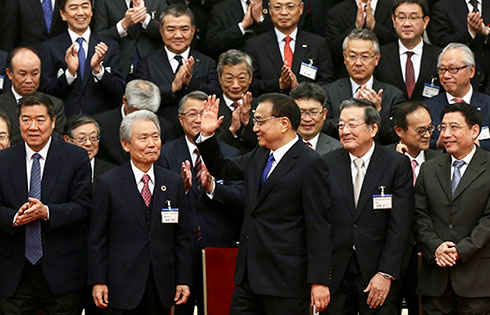UNEP and the green economy – four decades in development
Environment Ministers Meeting in Nairobi Will Mark 40th Anniversary
40 years ago in the Swedish capital city of Stockholm, history was made at a UN conference on the future of humanity and the planet. Amid rising concern over pollution over the air, the land and the seas; the growing loss of species and the dying of forests as a result of acid rain, governments agreed that a UN body charged with coordinating a global response to such challenges should be established.
Between June 1972 and the UN General Assembly that year, many countries lobbied to house this new environmental body called the UN Environment Programme (UNEP). In the end, Kenya won the diplomatic debate and in doing so became the first developing country to host a UN headquarters.
Black and white photographs taken on 2 October 1973 at the inaugural celebrations show Kenya's President Kenyatta, flanked by forest rangers and game wardens, waving his signature fly whisk while 43 year-old Canadian Maurice Strong, UNEP's first Executive Director, stands to attention.
China was among the first to become a member of the UNEP Governing Council that year and began making a voluntary contribution to UNEP's Environment Fund which grew to US$100,000 by 1976. That same year China also established its Permanent Mission to UNEP in Nairobi, allowing for closer collaboration.
By the 1980s, China was co-sponsoring UNEP training courses on a range of important environmental issues, including small hydropower development projects. Seven years later China and UNEP established the International Desertification Control Research and Training Center in Lanzhou in northwestern Gansu province.
In May 2002, UNEP and Shanghai's Tongji University signed an agreement which led to the establishment of the joint UNEP-Tongji Institute of Environment for Sustainable Development (IESD). Then on 19 September 2003, UNEP formally opened its China Office in Beijing and since then the organization's work in the country has expanded on a number of levels and in a number of areas.
UNEP was originally set up to coordinate the rest of the UN system's activities on environmental issues and to provide the science to member states on emerging trends in environmental change.
The emphasis on science has perhaps been among UNEP's most important contributions that in turn has led to governments negotiating key global treaties to address emerging environmental crises.
The Montreal Protocol on Substances that Deplete the Ozone layer—the protective shield that filters out dangerous levels of the sun's ultra violet rays—is a case in point. It became clear in the 1980s that certain chemicals used in products such as refrigerators to fire-fighting equipment were attacking the ozone layer. China signed the Protocol as early as September 1987. By 2010, this UNEP treaty had coordinated the phase-out of over 100 of these harmful gases.
Without the Montreal Protocol, atmospheric levels of ozone-depleting substances could have increased tenfold by 2050 which in turn could have led to up to 20 million more cases of skin cancer and 130 million more cases of eye cataracts, not to speak of damage to human immune systems, wildlife and agriculture.
UNEP continues to this day to bring forward the science and convening treaty negotiations.
Only a few months ago, governments from across the world met in UNEP to push forward plans for a global agreement on mercury—a notorious heavy metal that damages the nervous system.
The Mad Hatter in Alice in Wonderland was so-called because hat makers once used mercury to strengthen the brims of hats and breathed in the fumes.
In the late 1980s, as the world was struggling to understand the implications of rising greenhouse gases in the atmosphere UNEP and the World Meteorological Organization established the Intergovernmental Panel on Climate Change.
UNEP's scientific work has become the premier risk assessment and reference work for governments on the likely trends and impacts of global warming and the Panel's findings played a key role in the decision to establish the UN climate convention and its emission reduction treaty, the Kyoto Protocol.
Since 2008, UNEP has been championing the Green Economy as a way of generating development and employment but in a way that keeps humanity's footprint within ecological boundaries.
A growing number of countries, such as China, are undertaking activities to accelerate this transition towards sustainability and a Green Economy. China is the world's leading investor in renewable energy, overtaking Spain in 2009 and spending US$49 billion in 2010. Overall, China is committed to spending US$468 billion over the next five years, more than double the previous five years, on key industries, including renewable energy, clean technologies and waste management.
So what of the future? As Environment Ministers gather in Nairobi for their annual meeting of the UNEP Governing Council this month, all eyes are on the follow-up to the Earth Summit of 1992.
Rio+20, taking place in June, may prove to be an opportunity where the Green Economy initiative is translated into a fresh and forward-looking way of finally realizing sustainable development for seven billion people, rising to over nine billion by 2050.
Some governments are also signaling that the time has come to strengthen UNEP itself perhaps into a World Environment Organization.
40 years ago many of the challenges facing people and the planet were still theoretical today they are fast becoming reality.
The emergence of UNEP from Stockholm in 1972 was for some a surprise package—whether June 2012 will evolve the UNEP story onto a higher level, only time will tell.



























